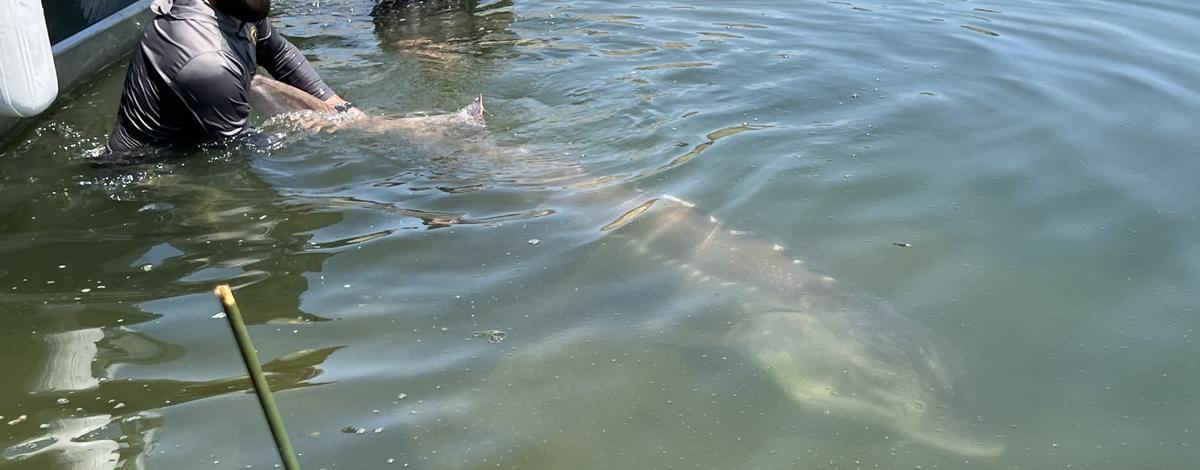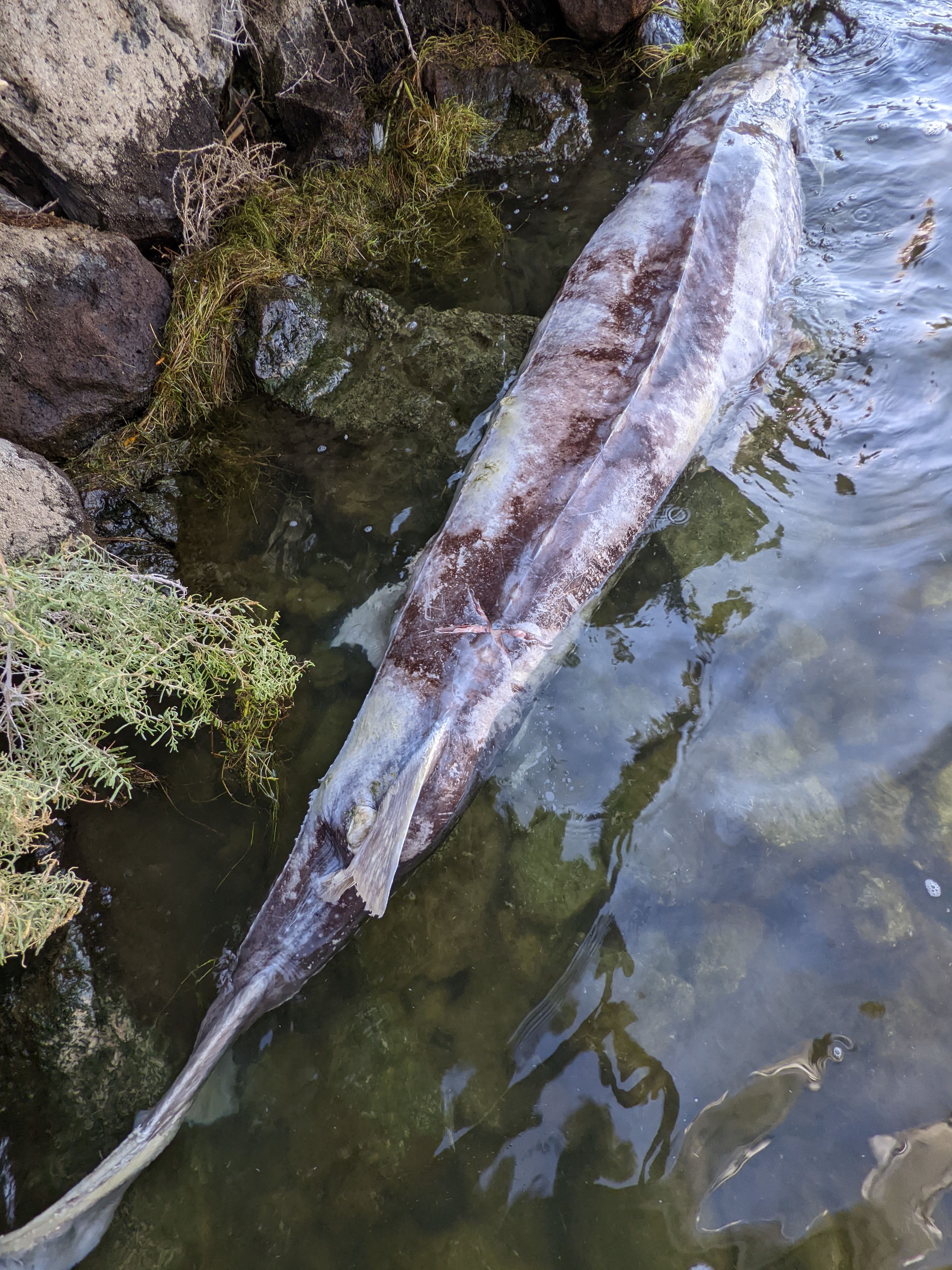After a concerning number of dead sturgeon washed up in a stretch of C.J. Strike Reservoir in late summer 2022 amid abnormally low oxygen levels and high water temperatures, Fish and Game issued a temporary conservation closure for sturgeon fishing. By themselves, the environmental conditions in 2022 approached – and even surpassed – known lethal limits for sturgeon. Knowing that angling might cause additional stress that could push the sturgeon over the edge, the department closed the fishery – an extremely rare action.
“This population of sturgeon is an extremely important one for a number of reasons,” said Statewide Fisheries Manager Joe Kozfkay. “It’s one of the largest populations in the state, and it is one of just two that are self-sustaining. It is also being used as the egg source for our sturgeon hatchery program, which is critical to conserving sturgeon in Idaho.”
With the difficult decision to close the fishery, Fish and Game committed to studying the interactions between angling effort and environmental conditions in the reservoir, and whether those interactions contribute to excessive sturgeon mortality.




